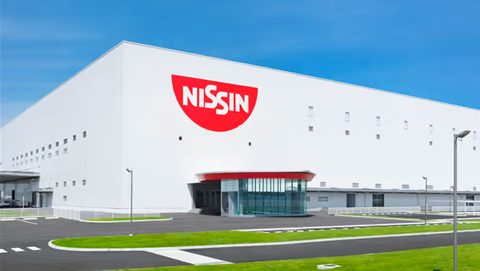Businesses are using AI to streamline communication and decision-making through AI-powered video conferencing, virtual assistants, and chatbots. However, as AI integrates further into enterprise collaboration tools, challenges, including hallucinations, bias, and operational inefficiencies, are threatening to undermine performance.
To counter the challenges, stakeholders must prioritise their strategies for mitigation to ensure that the adoption of AI drives sustainable success without compromising reliability or ethical standards.
Often this needs a multi-layered approach and the use of federated AI models, where one model generates outputs while another evaluates them for accuracy, reducing the possibility of errors, Zoom’s president of product and engineering, Velchamy Sankarlingam, told iTnews Asia in an exclusive interview.
Sankarlingam said human oversight remains an important safeguard, and it is necessary for AI-generated summaries to be reviewed before they are shared to ensure reliability.
This balance between automation and human validation, he added, is essential in enterprise environments, where even a small communication error can lead to significant misunderstandings.
Generative AI expands the role of workplace collaboration
AI has long enhanced workplace collaboration with features including virtual backgrounds, noise suppression, and real-time translation. Now, generative AI is expanding its role.
Sankarlingam highlighted that one advancement in AI-driven collaboration is automated meeting summarisation, where AI captures discussion points, condenses information, and assigns action items.
AI-driven queries enhance accessibility, allowing users to retrieve relevant information from past meetings and discussions, he added.
Beyond video conferencing, AI-powered call summarisation, voicemail transcription, and chat thread summaries help businesses streamline communication, ensuring employees stay informed without sifting through records.
According to Sankarlingam, as AI integration deepens, enterprises are focusing on models that offer contextual awareness, enabling AI to provide relevant insights while maintaining data security.
The shift toward federated AI models - where multiple models are dynamically selected based on specific use cases - reflects an industry-wide effort to balance accuracy, flexibility, and privacy, said Sankarlingam.
Increasing adoption of small language models
One of the biggest challenges in scaling AI for enterprise collaboration is balancing performance with cost and efficiency.
Talking about the technical challenge in integrating AI-powered automation into enterprise meetings and communication tools, Sankarlingam said an investment needs to be made in the infrastructure to enable AI model training.
Unlike traditional software, AI models first require immense computing power during the training phase, making backend investment crucial for successful integration, he said.
Second, organisations need professionals who can fine-tune and integrate AI models.
Sankarlingam said the third challenge is managing data, including GPU data, and ensuring access to relevant, high-quality datasets.
On the customer side, concerns around data privacy, regulatory compliance, and cost present barriers to AI adoption.
To overcome these challenges, Sankarlingam said enterprises are adopting Small Language Models (SLMs) due to efficiency, lower costs, and context-driven insights for collaboration.
SLMs require fewer computational resources while delivering accuracy for enterprise collaboration tasks, making AI adoption financially viable.
“We address these concerns by providing AI control options at both organisational and meeting levels, allowing users to disable features mid-session. AI relies on live transcription instead of recordings, reducing storage needs,” said Sankarlingam.
Businesses using Zoom can also enable zero data retention, ensuring transcripts are deleted after processing.
Beyond infrastructure and security concerns, another critical factor influencing AI adoption in enterprise collaboration is network reliability.
Zoom’s head of Asia, Lucas Lu, said, “In Southeast Asia, connectivity can be unpredictable, especially in remote areas with limited Wi-Fi or mobile networks."
“This poses a challenge for AI-powered collaboration tools, requiring them to operate efficiently even in low-bandwidth environments,” he said.
This adaptability is ideal for APAC’s diverse geography, where users often transition between urban offices, highways, and rural locations. Whether joining meetings from a Grab taxi, a café, or on the move, this ensures uninterrupted collaboration.
Shift toward multi-step AI models
AI in enterprise collaboration is evolving beyond basic automation, moving toward multi-step AI agents capable of executing complex tasks, retrieving information, and providing real-time assistance.
Rather than simply generating summaries or transcriptions, these systems optimize workflows by adapting to network conditions and maintaining performance even in challenging environments.
Sankarlingam said Zoom employs two architectural strategies to support large-scale meetings.
Zoom Mesh reduces outbound connections for large events by designating a few hosts to distribute the feed internally.
Zoom Node allows enterprises to keep meeting video and audio traffic within their private network.
A hybrid option also lets external attendees connect via the Zoom cloud while internal users stay on the private network, ensuring both performance and security.

Enterprises need AI that is practical, cost-effective, and offers granular control. They also prefer phased adoption to manage permissions and ensure AI aligns with security and compliance needs.
- Velchamy Sankarlingam, President, Product and Engineering, Zoom
Lu said a major challenge for CIOs is balancing AI adoption with cost-effectiveness.
The need is to evaluate whether AI adoption enhances productivity without introducing unnecessary costs.

If AI-driven automation increases efficiency by 10 percent but raises licensing costs by the same margin, the investment may not justify itself.
- Lucas Lu, Head of Asia, Zoom
He added that Zoom eliminates this friction by including AI capabilities at no extra cost, so that companies do not need to make trade-offs or limit AI usage to a small group.
Navigating regulatory and compliance challenges from AI
As AI adoption in workplace collaboration grows, enterprises need to navigate regulatory and compliance challenges. Data residency requirements, industry-specific regulations, and concerns around AI bias shape how organisations implement AI-powered communication tools.
“We are addressing this by offering regional data storage options and implementing strict privacy controls to ensure compliance with local regulations,” said Sankarlingam.
“AI-generated summaries and transcripts can also be designed to align with organisational policies, providing transparency and control over how information is processed and stored,” he added.
For enterprises operating across multiple regulatory environments, AI solutions must be flexible enough to meet compliance requirements while still maintaining functionality and efficiency.
As AI collaboration further evolves, Lu said AI assistants are becoming proactive, not only in summarising meetings but automating follow-up actions, scheduling next steps, and integrating insights across business applications.
The shift toward smaller and efficient AI models is expected to enhance processing speed and reduce costs, making AI-powered automation accessible to businesses of all sizes, he added.










